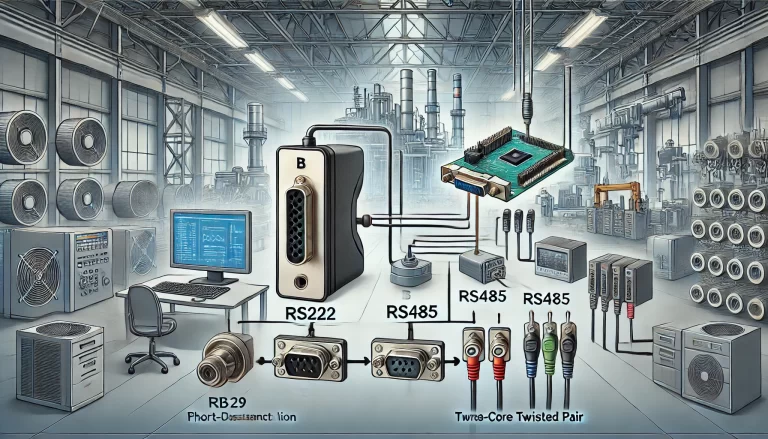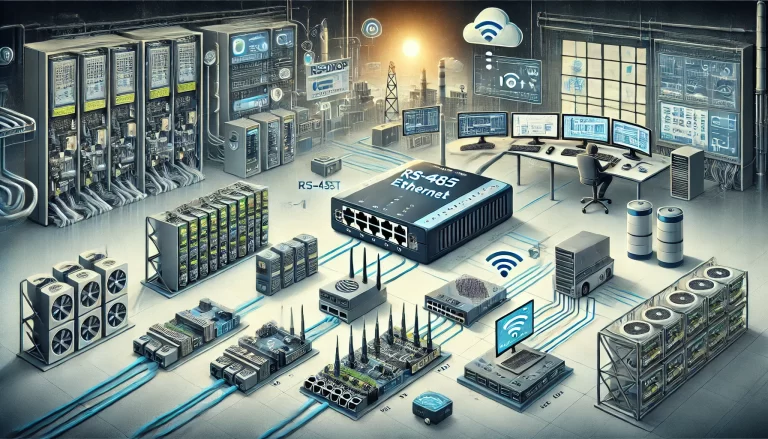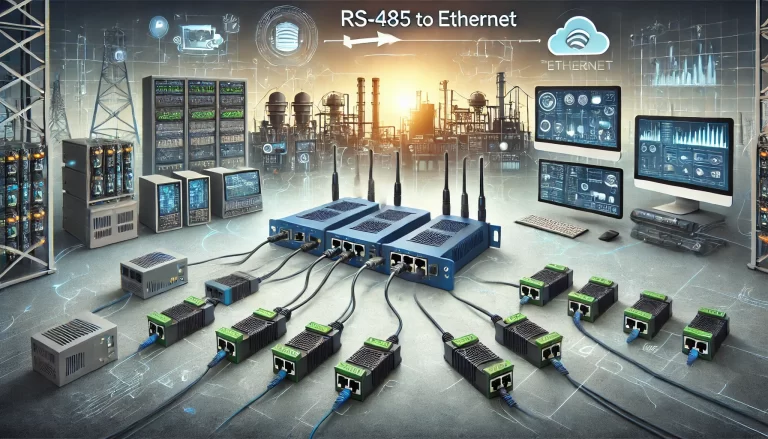In the realm of industrial automation, the need for seamless communication between field devices and centralized control systems is more critical than ever. While RS-485 continues to dominate field-level communication due to its reliability and cost-effectiveness, Ethernet-based networks have become the standard for modern industrial control and data acquisition systems. Bridging this gap is the RS-485 to Ethernet converter—a vital tool that has become indispensable in contemporary industrial environments.

1. Legacy of RS-485: Still a Workhorse at the Field Level
RS-485 has been a preferred physical layer standard for decades due to its:
Long-distance communication capability (up to 1200 meters)
Multi-drop network topology (supports 32+ devices on a single bus)
High noise immunity suitable for harsh industrial environments
Low cost implementation in PLCs, sensors, HMIs, motor drives, and other field instruments
Despite the emergence of more modern protocols, RS-485 remains embedded in thousands of industrial devices.

2. Rise of Ethernet in Industrial Networking
Ethernet has evolved from an office communication protocol into a robust industrial backbone supporting:
High-speed data transmission (100 Mbps or more)
Interconnectivity with cloud systems, MES, SCADA, and IIoT platforms
Structured network architectures with switches, routers, and fiber optics
Modern protocols like Modbus TCP, OPC UA, MQTT, and HTTP
As Ethernet permeates factory floors, the challenge becomes integrating legacy RS-485 devices into this modern infrastructure.
3. RS-485 to Ethernet: Bridging the Gap
The RS-485 to Ethernet converter (also known as a serial device server or serial-to-IP gateway) serves as a protocol and media translator, allowing traditional serial devices to communicate over IP networks.
✦ Key Functions:
Converts Modbus RTU (serial) to Modbus TCP (Ethernet)
Provides virtual COM ports, making legacy systems think the device is locally connected
Supports TCP Server, TCP Client, and UDP operating modes
Enables remote monitoring, control, and diagnostics via LAN/WAN/Internet

4. Benefits for Industrial Applications
🔹 Extend Device Lifespan Without Redesign
Instead of replacing RS-485-based equipment, manufacturers can keep existing infrastructure while upgrading the control system.
🔹 Reduce Cabling Complexity
Ethernet infrastructure (using switches, fiber optics, etc.) simplifies long-distance communication compared to extensive RS-485 wiring.
🔹 Enable Remote Monitoring & Control
With IP connectivity, plant operators can access RS-485 devices from control rooms, headquarters, or even remote cloud dashboards.
🔹 Centralize Device Management
Multiple RS-485 devices across different locations can be integrated into a centralized SCADA or MES system.
5. Typical Industrial Use Cases
| Application Area | Implementation Purpose |
|---|---|
| PLC Integration | Connect legacy PLCs to modern SCADA or cloud systems |
| Field Instrumentation | Collect sensor/actuator data over Modbus RTU and push via TCP |
| Building Automation | Monitor HVAC, lighting, and access control systems remotely |
| Power Monitoring | Connect RS-485-based power meters to centralized dashboards |
| Data Logging Systems | Stream serial data to remote servers for analysis and storage |

6. Advanced Features in Modern RS-485 to Ethernet Gateways
Today’s industrial-grade converters offer far more than basic serial-to-IP conversion:
Web-based configuration interfaces
Dual Ethernet ports with failover and redundancy
PoE (Power over Ethernet) support
DIN-rail mounting and rugged enclosures
Wide temperature (-40 to 85°C) and voltage support
Watchdog timers and auto-reconnect mechanisms
These features ensure the converter operates reliably in mission-critical and harsh industrial environments.
7. Real-World Example: SCADA Integration
Consider a water treatment facility where level sensors, pressure transmitters, and flow meters all communicate via RS-485. A modern SCADA system, however, only supports Modbus TCP. Using RS-485 to Ethernet converters, all devices can be made accessible over the plant’s Ethernet network, allowing centralized monitoring, alarm handling, and data analysis—without replacing any field devices.

8. Conclusion: A Small Device with Strategic Impact
RS-485 to Ethernet converters may seem like minor components, but they play a strategic role in digital transformation. By bridging traditional serial protocols with modern Ethernet infrastructure, they:
✅ Preserve existing investments
✅ Simplify integration
✅ Enable remote access
✅ Accelerate IIoT adoption
As industries evolve toward intelligent manufacturing and smart factories, RS-485 to Ethernet conversion is not optional—it’s essential.
